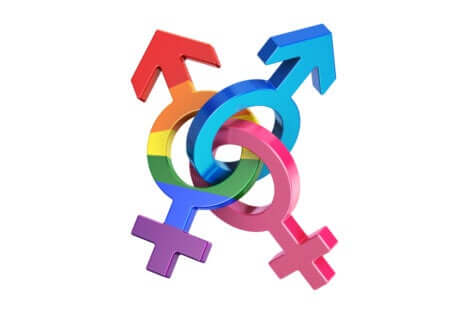5 Types of Sexual Orientation


Written and verified by the psychologist Elena Sanz
It’s important to know the different types of sexual orientation that exist so that we can all understand our preferences and respect those of others. Sexuality and attraction are two fundamental spheres in human development. Connecting at different levels is necessary for keeping ourselves healthy both physically and psychologically.
A healthy relationship with our sexuality is essential. That means we should be aware of what we like, what moves us, and what awakens our desires. However, it also means being able to accept ourselves for who we are and express it naturally.
The myths and taboos that have surrounded sex for centuries can make this essential task more difficult for us. Therefore, you must have a clear and truthful understanding of this information.
What is sexual orientation?
First of all, we have to be clear about what sexual orientation is since we often confuse it with other related concepts.
We can define sexual orientation as the physical, psychological, or emotional attraction that one feels towards a specific population of people. So, it’s a stable and lasting preference for a specific group with whom we want to connect romantically, emotionally, and sexually.
Next, we have to differentiate this term from others such as gender identity, which designates the subjective and profound experience of an individual in regards to their gender. That is to say, it refers to the gender with which each person identifies, which may or may not be the same as their biological sex.
Also, you mustn’t confuse sexual orientation with gender expression. This refers to how we express ourselves externally in terms of our behavior and outward appearance. This expression may not match societal expectations (for example, when society labels men as effeminate).

Types of sexual orientation
The different types of sexual orientation are based on the different preferences people have in terms of their sexuality. Some are well-known and broadly accepted, while others do not receive the recognition they deserve.
Let’s look at the most common types.
1. Heterosexuality
This is the most common type of sexual orientation and is also the most widely accepted at a social level.
Heterosexual people are those who are attracted to individuals of the opposite gender, both physically and emotionally. For example, heterosexual men prefer to pursue romantic and sexual relationships with women and vice versa.
2. Homosexuality
Those who are homosexual are attracted to people of the same gender. Following heterosexuality, homosexuality is the next most common sexual orientation.
Generally, we use the words gay and lesbian to talk about homosexual men and women, respectively.
3. Bisexuality
Bisexuality refers to when people are physically and emotionally attracted to individuals of both genders. Unfortunately, bisexual people face certain stigmas when discussing their sexuality, since some people will say it’s a phase. Other times, people will tell them they are just confused.
However, bisexuality is just as valid a sexual orientation as any other. In fact, some studies suggest that most of the population is bisexual to some degree.
4. Pansexuality
Pansexuality is a sexual and romantic attraction to any human being, regardless of sex, gender, or appearance. Therefore, pansexual people focus their attention on an individual’s qualities and personality.
They do not care if the person is a man, woman, or identifies as non-binary.
5. Asexuality
Asexual people are those who do not experience sexual desire or attraction for any gender. Arguably, they do not have any interest in sex or sexual activities.
However, they can feel an emotional intellectual, or romantic attraction to other people. So, even though there is no physical desire, they do bond with others emotionally and on other levels. Asexual people may connect with people of the same gender, the opposite, or both.
It’s important to not confuse asexuality with celibacy or abstinence. With asexuality, sexual desire doesn’t exist. However, with the other two cases, people are controlling or avoiding that desire due to their beliefs or convictions.

Also read: Family Support for Transgender People is Key
Other types of sexual orientation
In addition to the ones named above, there are many other types of sexual orientation. For example, demisexual people are only attracted to those individuals with whom they share a strong emotional bond. Also, sapiosexuals find attraction in one’s intelligence.
In short, sexual preferences and tastes vary greatly and there’s a wide spectrum.
We cannot restrict sexuality to a few rigid and unchanging options. Flexibility and acceptance are two essential elements for discovering, experiencing, and enjoying one’s sexuality without judging ourselves or those around us.
All cited sources were thoroughly reviewed by our team to ensure their quality, reliability, currency, and validity. The bibliography of this article was considered reliable and of academic or scientific accuracy.
- Rieger, G., Savin-Williams, R. C., Chivers, M. L., & Bailey, J. M. (2016). Sexual arousal and masculinity-femininity of women. Journal of Personality and Social Psychology, 111(2), 265.
- Prause, N., & Graham, C. A. (2007). Asexuality: Classification and characterization. Archives of Sexual Behavior, 36(3), 341-356.
- Savin-Williams, R. C., Joyner, K., & Rieger, G. (2012). Prevalence and stability of self-reported sexual orientation identity during young adulthood. Archives of sexual behavior, 41(1), 103-110.
This text is provided for informational purposes only and does not replace consultation with a professional. If in doubt, consult your specialist.








